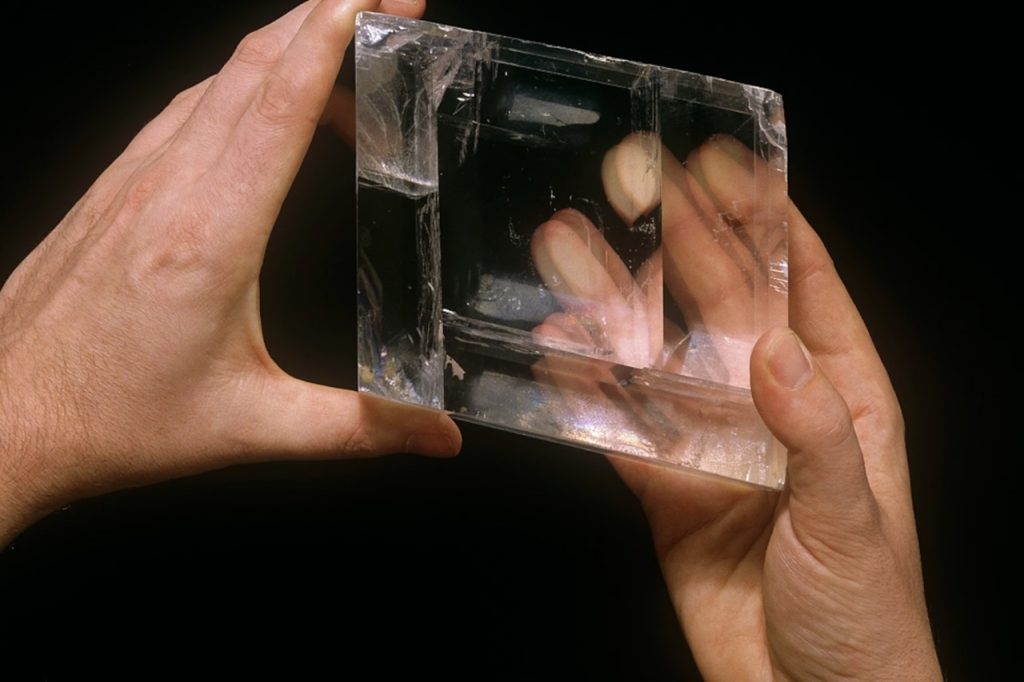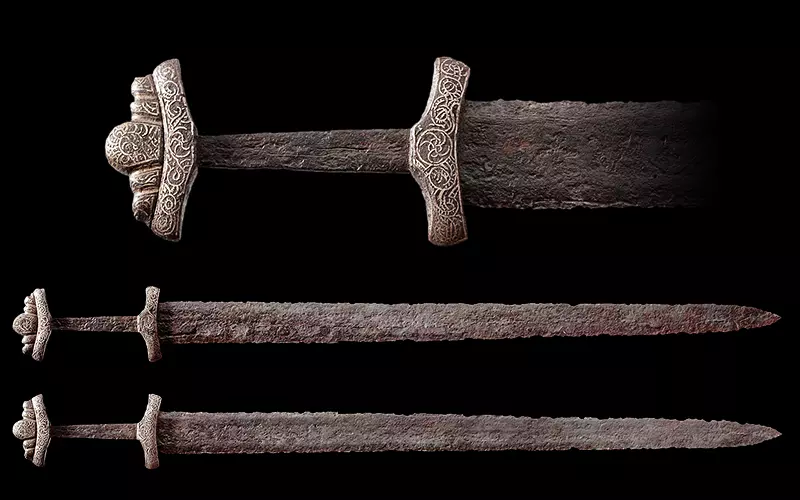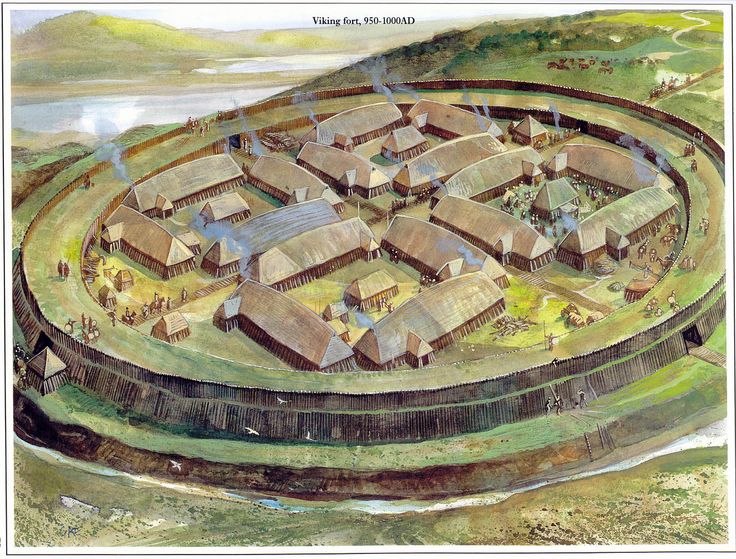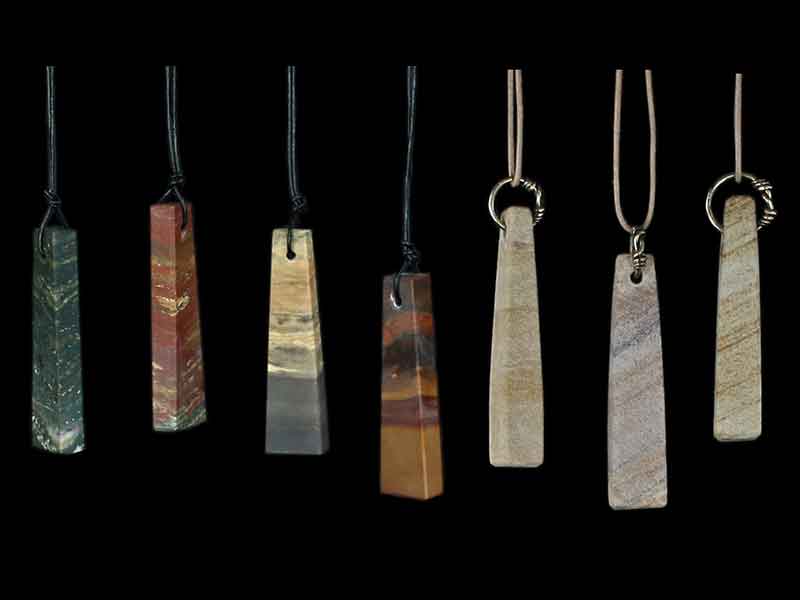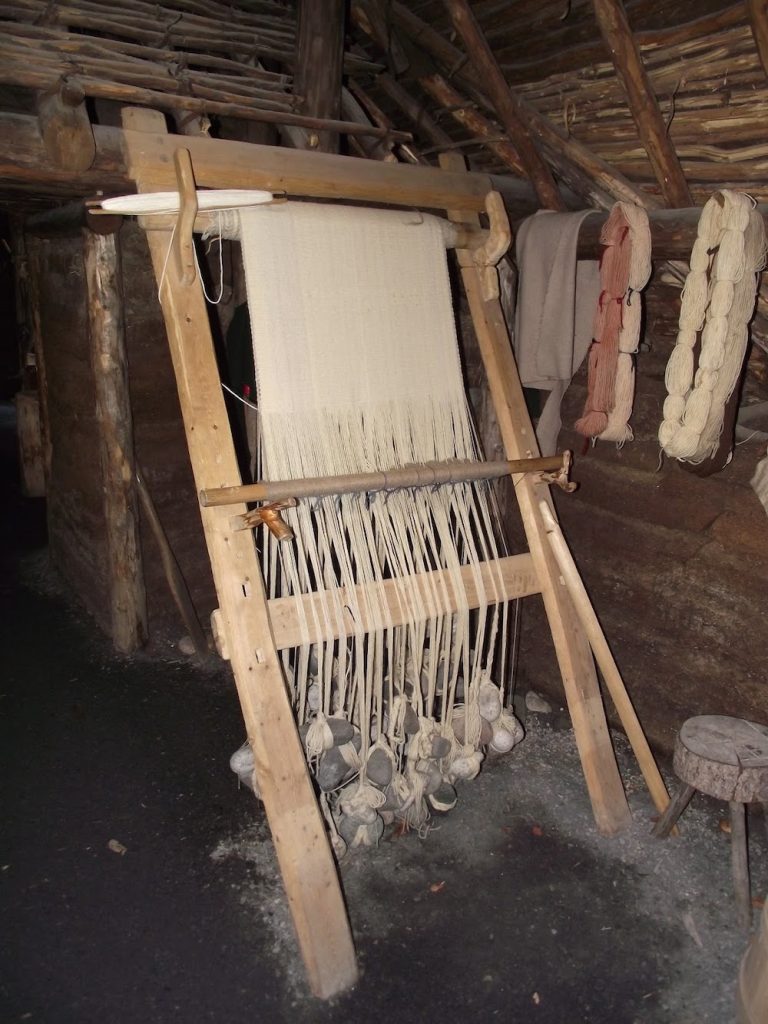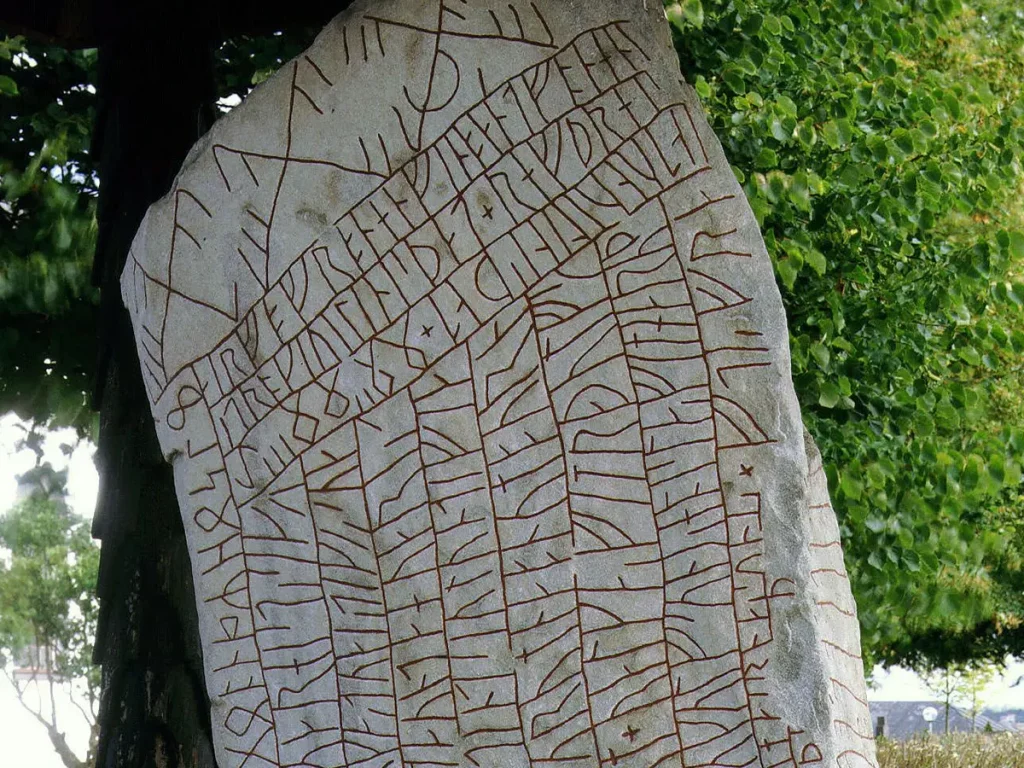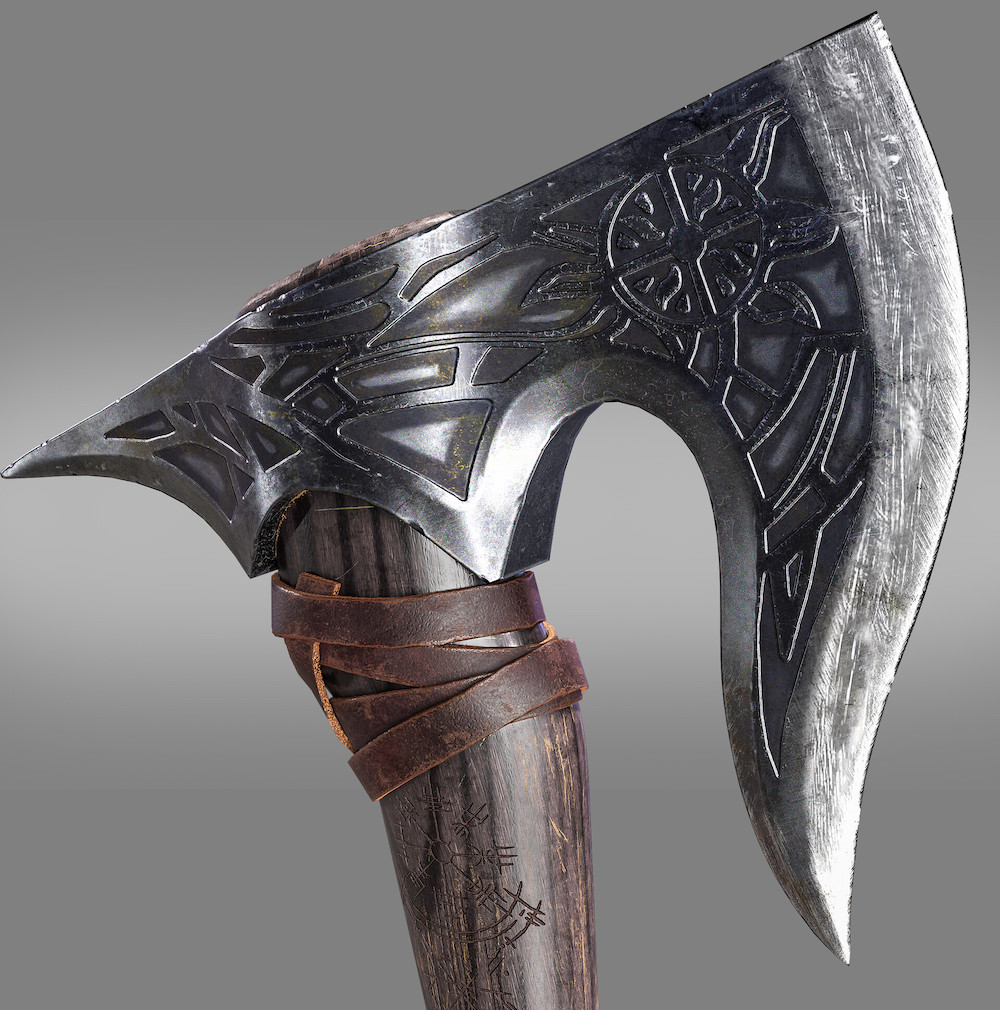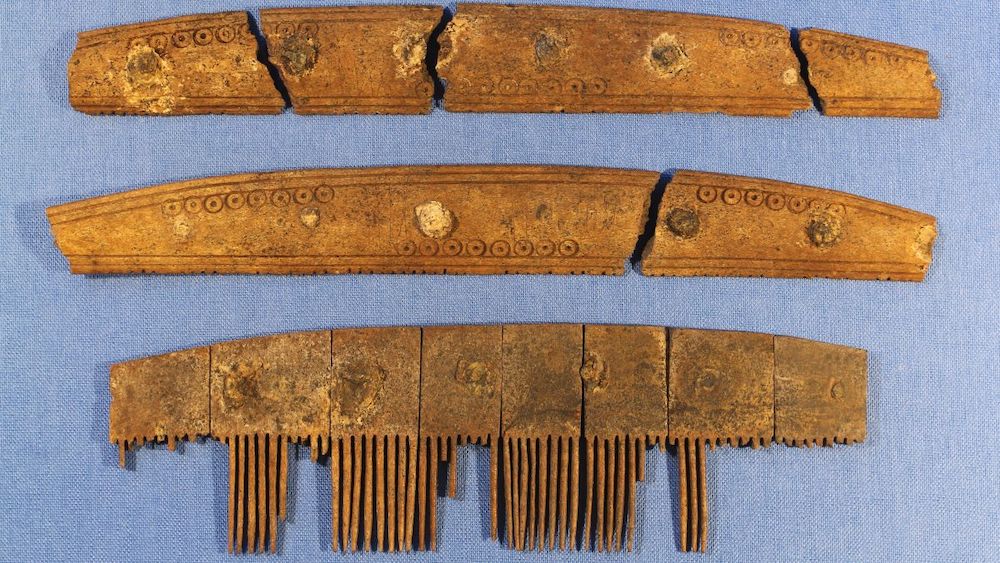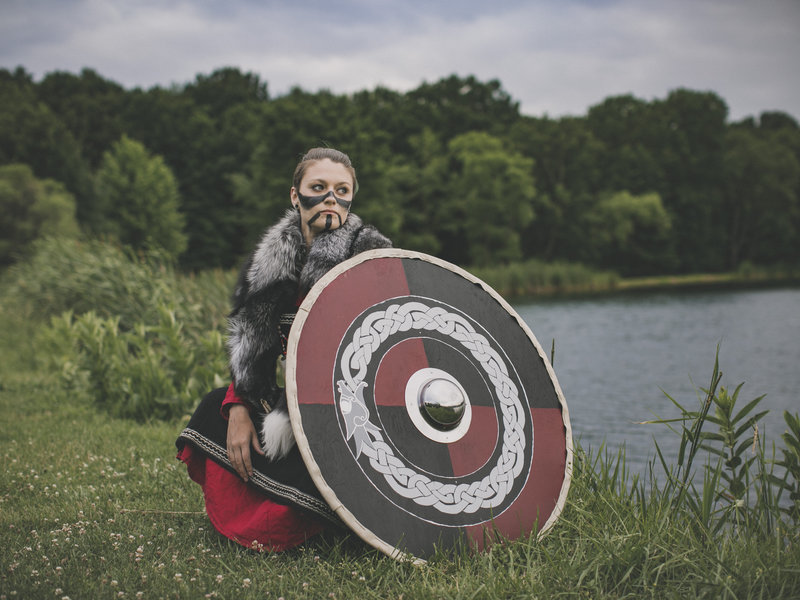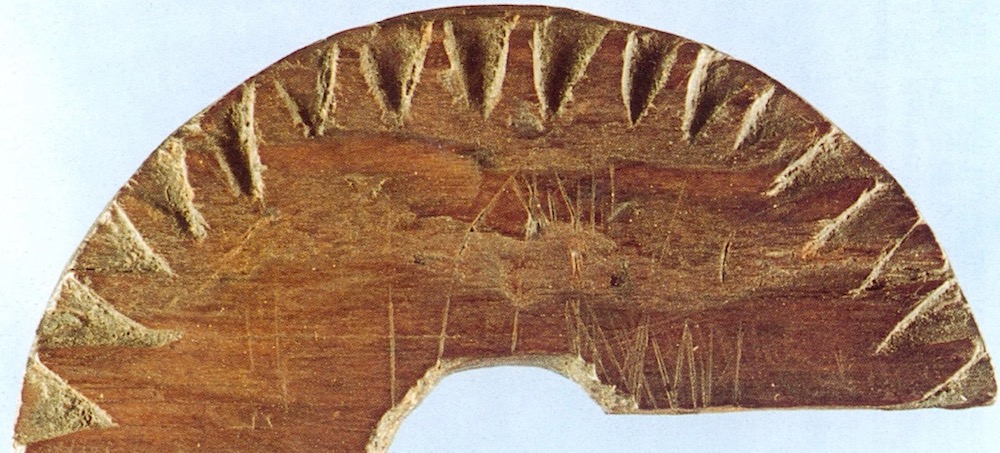Today, the Norse people are primarily remembered for their fearsome reputation as barbaric raiders, looters, and pillagers, striking terror into the hearts of their victims with their relentless forays into Europe. However, beneath this menacing veneer lies a forgotten aspect of the Viking character – their exceptional ingenuity and resourcefulness in creating remarkable Viking inventions.
The Vikings were not merely savage marauders but also skilled engineers, inventors, and innovators who revolutionised various aspects of their daily lives, including navigation, warfare, and personal grooming.
In this article we delve into the lesser-known side of the medieval Scandinavian character, exploring 21 fascinating Viking inventions and innovations that left an indelible mark on the world.
Table of Contents
- 1. Here are 21 Fascinating Viking Inventions and Innovations
- 1. The Viking Longship
- 2. The Sunstone
- 3. Chain Mail Armor
- 4. The Ulfberht Sword
- 5. The Viking Helmet
- 6. Skis and Ski Poles
- 7. The Viking Trelleborg Fortresses
- 8. The Viking Key
- 9. The Viking Fish Trap
- 10. The Viking Whetstone
- 11. The Viking Textile Loom
- 12. The Viking Bow and Arrow
- 13. The Viking Greenlandic Tunic
- 14. The Viking Runestone
- 15. The Viking Battle-Axe
- 16. The Viking Comb
- 17. The Viking Keel
- 18. The Viking Magnetic Compass
- 19. The Viking Shield
- 20. The Viking Sun Compass
- 21. The Viking Tent
- 2. Conclusion
Here are 21 Fascinating Viking Inventions and Innovations
1. The Viking Longship
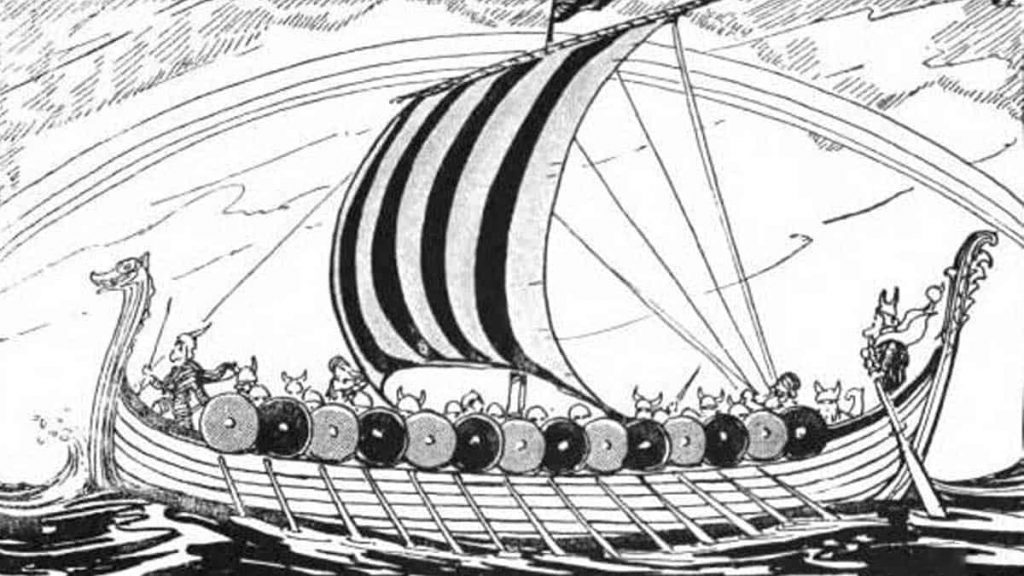
The longship, one of the most iconic Viking inventions, revolutionised the way Vikings traveled, traded, and waged war.
These sleek and agile ships were engineered for speed and manoeuvrability, designed with a shallow draft that allowed them to navigate both deep oceans and shallow rivers with ease.
The symmetrical bow and stern enabled quick directional changes without the need to turn the ship around, a feature that was vital for surprise raids and speedy retreats.
Constructed using a clinker-built technique, the overlapping planks of the longship’s hull provided flexibility and strength, allowing the vessel to withstand the rough seas of the North Atlantic.
The addition of a square sail, made from wool or linen, and the skilful use of oars allowed Vikings to travel vast distances, reaching as far as North America, Greenland, and the shores of the Mediterranean.
2. The Sunstone
The enigmatic sunstone, a Viking innovation, was a remarkable navigational tool that allowed the seafaring Norsemen to determine their position even under cloudy skies or when the sun was below the horizon.
The sunstone, believed to be a type of calcite crystal called Iceland spar, possesses a unique optical property known as birefringence, which splits light rays into two separate beams. By observing the way these beams interact with each other, a skilled navigator could locate the sun’s position.
The use of the sunstone has been confirmed by archaeological findings, such as the 10th-century shipwreck discovered near the island of Alderney. A calcite crystal found on board provided strong evidence of the sunstone’s role in Viking navigation.
This impressive tool allowed the Vikings to sail across vast oceans with unparalleled precision, expanding their trade routes, and conquering new lands.
3. Chain Mail Armor
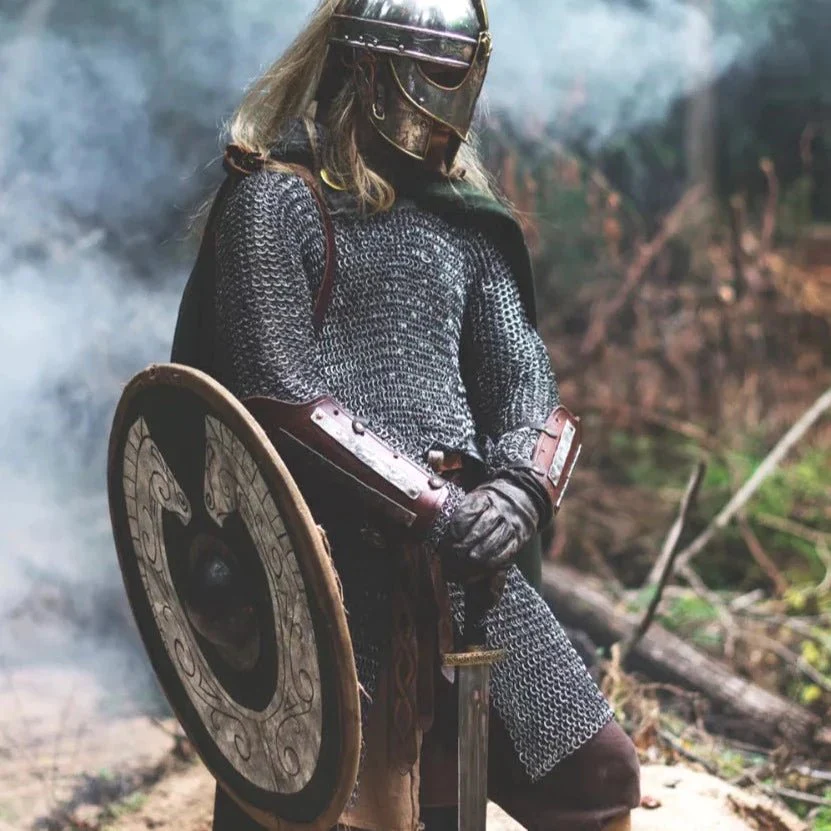
Viking warriors were known for their fierce fighting skills and innovative armor, among which chain mail was a key invention. Chain mail, constructed by interlocking small metal rings, provided a flexible yet durable protective layer for the wearer.
The armor’s flexibility allowed for a greater range of motion in battle, while the closely linked rings effectively absorbed and distributed the force of blows from enemy weapons.
Although chain mail was not unique to the Vikings, their version, known as the “Norse weave,” featured a dense, four-in-one pattern that provided superior protection compared to other contemporary designs.
The time-consuming and labor-intensive process of crafting chain mail made it a prized possession among Viking warriors. Its effectiveness in battle was unquestioned, and the chain mail armor undoubtedly played a significant role in the Vikings’ reputation as formidable fighters.
4. The Ulfberht Sword
The Ulfberht sword, a legendary weapon crafted by the Vikings, was the epitome of swordsmithing technology during its time.
Made from high-quality crucible steel, the Ulfberht sword was stronger, lighter, and more flexible than other swords of the era.
The steel’s purity, achieved through an advanced smelting process, was a testament to the skill and knowledge of Viking blacksmiths.
The Ulfberht sword’s superior quality and scarcity made it a highly sought-after weapon among Viking warriors. The blade bore the inscribed name “Ulfberht,” signifying the sword’s elite status and setting it apart from ordinary weapons.
The Ulfberht sword remains a symbol of Viking craftsmanship and ingenuity, showcasing their ability to produce advanced technology that outperformed their contemporaries.
5. The Viking Helmet

The Viking helmet, often mistakenly depicted with horns, was a crucial piece of protective gear that safeguarded the heads of Norse warriors in battle.
Contrary to popular belief, authentic Viking helmets featured a conical or rounded shape and were made from iron or steel, providing excellent protection against enemy blows.
The lack of horns on actual Viking helmets ensured that enemy weapons would not be caught or deflected towards the wearer’s face.
Notable Viking helmets, such as the Gjermundbu helmet, featured a “spectacle” guard that protected the eyes and nose, while allowing for an unobstructed field of vision.
The guard’s design provided a balance between protection and visibility, essential for warriors engaging in close combat. The Viking helmet demonstrates the practicality and effectiveness of Norse battle gear, which contributed to their fearsome reputation as skilled fighters and conquerors.
6. Skis and Ski Poles
Skis and ski poles, although not exclusively Viking inventions, were adopted and refined by the Norse people for travel and hunting in the harsh, snow-covered landscapes of Scandinavia.
The Vikings crafted skis from split tree trunks, shaped and smoothed to glide effortlessly over snow. A single, long ski pole was used for propulsion and balance, allowing for efficient movement through the wintry terrain.
The use of skis and ski poles offered the Vikings a significant advantage during winter warfare, enabling them to navigate and launch surprise attacks in areas that would have been otherwise inaccessible.
This innovative mode of transportation not only facilitated military operations but also allowed the Vikings to hunt and gather resources throughout the year.
7. The Viking Trelleborg Fortresses
The Viking Trelleborg fortresses were a groundbreaking architectural innovation that showcased the Norse people’s advanced understanding of engineering and construction.
Built during the reign of Harald Bluetooth, these circular fortresses were strategically placed across Denmark and southern Sweden, providing defense and acting as military bases for the expanding Viking territories.
The precise geometric layout of the fortresses demonstrated an impressive level of planning and execution.
Each Trelleborg fortress featured a surrounding earthen rampart and a wooden palisade, with four gates aligned to the cardinal points.
Inside the fortification, longhouses were symmetrically arranged around a central courtyard, reflecting an organized and purposeful design.
The Viking Trelleborg fortresses stand as a testament to the Norse people’s expertise in engineering and their ability to construct formidable defensive structures that played a crucial role in their military campaigns.
8. The Viking Key
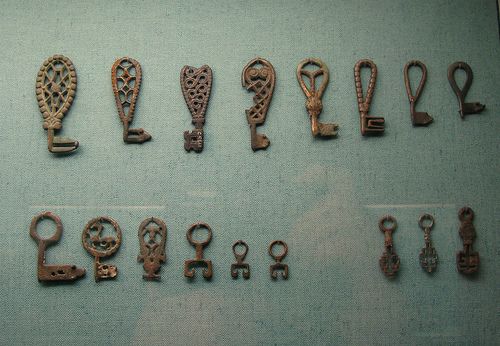
The Viking key, a simple yet effective locking mechanism, was a noteworthy innovation that demonstrated the practical ingenuity of the Norse people.
Keys crafted during the Viking Age were typically made from iron and featured a unique, intricate design, rendering them both functional and visually appealing.
The key’s teeth were designed to engage with corresponding notches in the lock, allowing for the bolt to be secured or released.
The use of locks and keys offered a sense of security and privacy in Viking homes, safeguarding valuables and protecting the inhabitants from unwanted intruders.
9. The Viking Fish Trap

The Viking fish trap, an innovative and sustainable method for catching fish, showcased the resourcefulness and ingenuity of the Norse people in acquiring food resources.
Constructed from woven willow or hazel branches, these fish traps were designed to guide fish into a narrow opening, making it difficult for them to escape.
The traps were strategically placed in rivers, streams, and coastal waters, allowing for the efficient capture of fish without the need for constant attention.
The Viking fish trap provided a reliable and sustainable source of food, supporting the growth and development of Viking communities.
10. The Viking Whetstone
The Viking whetstone was an essential tool for maintaining and sharpening the various weapons and tools used by the Norse people.
Typically made from fine-grained stone, such as sandstone or slate, the whetstone allowed for the precise honing of blade edges, ensuring the effectiveness of the Vikings’ fearsome arsenal.
The use of the whetstone underscores the importance placed on the upkeep of their weapons and tools, which were crucial to their survival and success.
Carried by Viking warriors and craftsmen alike, the whetstone was a versatile and indispensable tool that played a vital role in everyday life.
With regular use of the whetstone, the Vikings ensured that their weapons remained razor-sharp, contributing to their prowess in battle and hunting.
11. The Viking Textile Loom
The Viking textile loom was a significant innovation that revolutionised the production of clothing, sails, and other woven goods in Viking society.
The warp-weighted loom, which used hanging weights to keep the warp threads taut, allowed for the efficient production of textiles in a variety of patterns and designs.
This invention played a crucial role in the economic development of Viking communities, as textiles were valuable trade goods that could be exchanged for other resources.
Viking textiles, including intricately woven tapestries and brightly colored garments, showcased the artistry and skill of Norse weavers.
The Viking textile loom allowed for the creation of high-quality, durable goods that not only served practical purposes but also symbolised the wealth and status of their owners.
12. The Viking Bow and Arrow
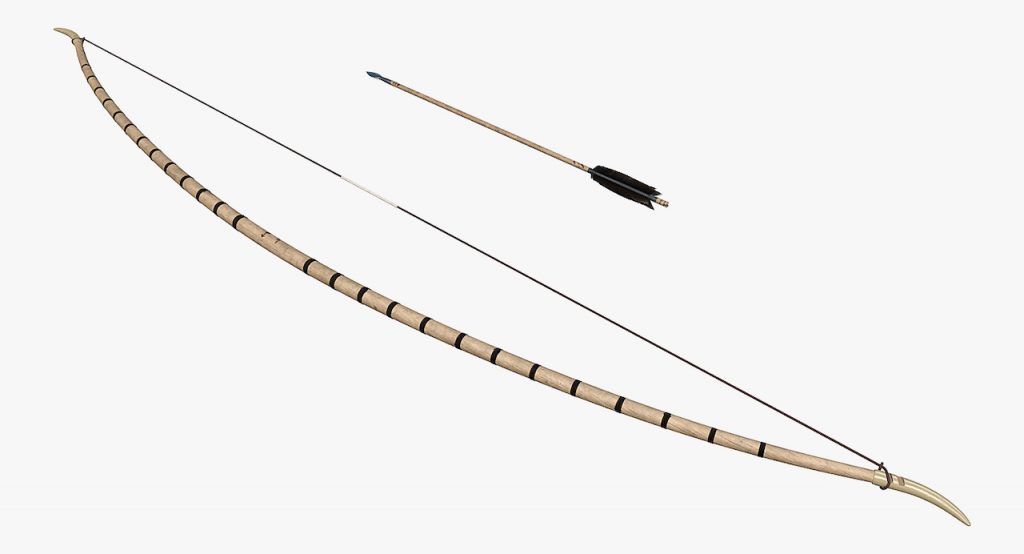
The Viking bow and arrow, while not a unique invention, was a weapon system that was expertly employed by the Norse people in battle and hunting.
Constructed from yew or elm wood, the Viking longbow was a powerful weapon capable of launching arrows with remarkable speed and accuracy.
Paired with a selection of arrowheads, including broadheads for hunting and bodkin points for penetrating armor, the Viking bow and arrow was a versatile and lethal tool in the hands of a skilled archer.
Used in both offensive and defensive capacities, the Viking bow and arrow provided a significant tactical advantage in warfare.
Its long-range capabilities allowed for the harassment and thinning of enemy ranks before engaging in close combat.
13. The Viking Greenlandic Tunic
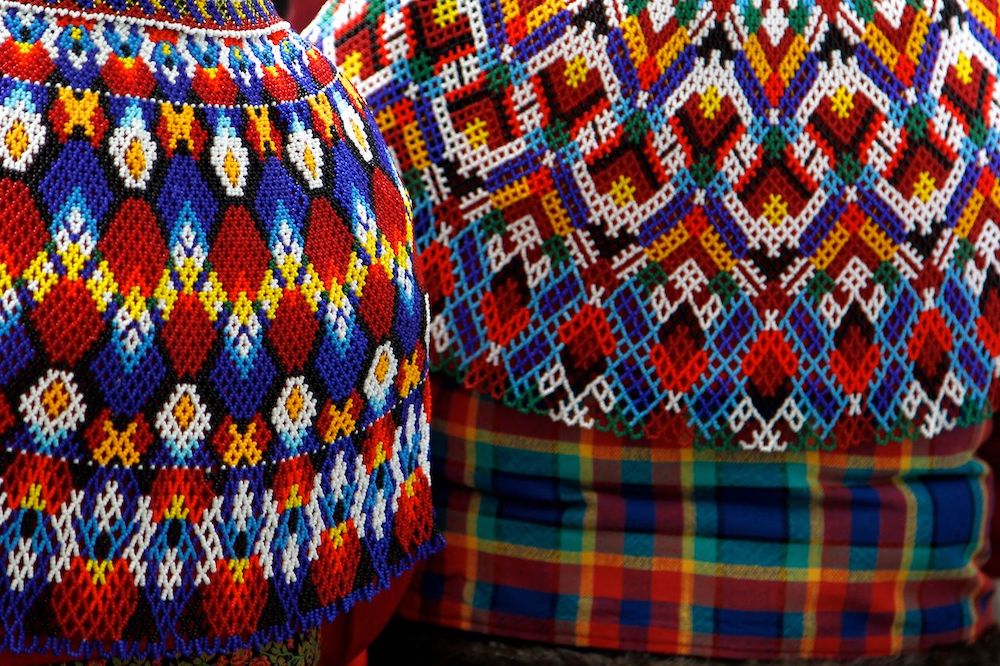
The Viking Greenlandic tunic was an innovative piece of clothing designed to withstand the harsh, cold conditions of the North Atlantic.
Constructed from multiple layers of wool and other insulating materials, the tunic provided warmth and protection for those venturing into the unforgiving Arctic environment.
The combination of durable, water-resistant outer layers and insulating inner layers ensured that the wearer remained warm and dry in the face of extreme weather conditions.
The Greenlandic tunic’s design showcased the adaptability and resourcefulness of the Viking people, who were able to thrive in some of the most challenging environments on Earth.
This essential piece of clothing enabled the Vikings to explore, settle, and conduct trade in the far reaches of the North Atlantic, including Greenland and North America.
14. The Viking Runestone
The Viking runestone, a distinctive form of memorial carving, was an innovation that not only served as a testament to the lives of the deceased but also provided a unique insight into the culture and beliefs of the Norse people.
Runestones were large stones inscribed with runes, the Viking script, which conveyed messages and commemorated the lives of individuals or significant events.
These impressive monuments were often adorned with intricate artwork and designs, showcasing the artistic talents of the Viking carvers.
The Viking runestone stands as a symbol of the cultural and historical legacy of the Norse people, providing modern scholars with valuable information about their society, beliefs, and customs.
Many runestones have been preserved and studied, revealing a wealth of knowledge about the lives and achievements of the Vikings.
15. The Viking Battle-Axe
The Viking battle-axe, an iconic symbol of the Norse warrior, was a highly effective and versatile weapon employed in both offensive and defensive capacities.
Evolved from the everyday wood-chopping axe, the battle-axe underwent significant modifications, such as the enlargement of the blade and the addition of a lower hook, which was useful for catching an enemy’s foot or shield rim.
The axe handle was also lengthened, allowing Viking warriors to strike their foes from a greater distance.
Well-balanced and easy to wield, the Viking battle-axe was highly effective in inflicting wounds and causing fatalities.
Although Viking sagas occasionally describe axes being used as throwing weapons, this tactic was likely seldom, if ever, employed in actual combat.
16. The Viking Comb
The Viking comb, crafted from deer antlers, was a highly valued personal item that showcased the Norse people’s vanity and appreciation for grooming.
Despite their ferocious reputation, the Vikings took great care of their appearance, often carrying intricately decorated combs alongside their swords and knives.
According to archaeologist Steve Ashby, these combs were “massively over-engineered” and made from the same material as specialized tools like polishers, saws, and rasps.
Viking combs were so highly prized that they were frequently carried to the grave, reflecting the importance of personal grooming as an aspect of Viking identity.
Although comb-making eventually died out in England after the Norman Conquest, the tradition persisted in Scandinavia, with combs imported from Norway continuing to be purchased and used in Sweden.
17. The Viking Keel

The Viking keel was a groundbreaking innovation in shipbuilding, playing a crucial role in the construction of the iconic Viking longship.
The keel, a structural component that runs along the bottom of the ship, provided stability and facilitated directional control.
By developing a robust and streamlined keel, the Vikings were able to create ships that were both fast and manoeuvrable, allowing them to dominate the seas and conduct daring raids and expeditions.
The Viking keel revolutionised maritime technology, giving the Norse people an edge in both trade and warfare.
The advanced design of the keel allowed Viking ships to sail across oceans, seas, and inland rivers with unparalleled ease and speed.
18. The Viking Magnetic Compass
The Viking magnetic compass was an innovative navigation tool that allowed the Norse people to accurately determine their bearings while sailing across the open seas.
Although the Chinese are credited with the invention of the magnetic compass, the Vikings adapted this technology for their own purposes, integrating it into their existing navigational methods.
The Viking compass consisted of a magnetised needle that aligned itself with the Earth’s magnetic field, pointing toward the magnetic north.
By utilizing the magnetic compass in conjunction with other navigational tools, such as the sun compass and sunstone, the Vikings were able to maintain their course and conduct successful voyages, even in the absence of visual landmarks.
19. The Viking Shield
The Viking shield, an essential piece of defensive equipment, was expertly crafted to provide maximum protection for Norse warriors in battle.
Made from wooden planks bound together with leather or rawhide, the Viking shield was lightweight and easy to maneuver.
A central iron boss, or metal hub, reinforced the shield and provided additional protection for the warrior’s hand while also serving as a striking weapon in close combat.
The Viking shield was not only a functional piece of armor but also a canvas for artistic expression.
Many shields were adorned with intricate patterns and vibrant colors, reflecting the warrior’s personal tastes and identity.
The Viking shield played a vital role in the Norse people’s success in battle, providing essential defense against enemy attacks and enabling them to maintain their fearsome reputation as formidable warriors.
20. The Viking Sun Compass
The Viking sun compass was an innovative navigational instrument that enabled the Norse people to determine their direction based on the position of the sun.
The sun compass consisted of a circular disk with a central gnomon, or pointer, which cast a shadow on the surrounding marked dial.
By aligning the gnomon’s shadow with the appropriate time markings, Viking navigators could accurately establish their course and maintain their bearings.
Used in conjunction with other navigational tools, such as the magnetic compass and sunstone, the Viking sun compass allowed the Norse people to sail with confidence, even in unfamiliar waters.
This ingenious device played a crucial role in the Vikings’ legendary maritime exploits, contributing to their ability to undertake daring voyages and establish far-flung settlements throughout the world.
21. The Viking Tent
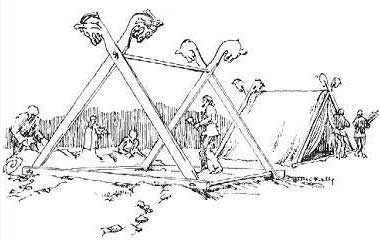
The Viking tent was an essential piece of equipment for the Norse people, providing shelter and protection during their many raids, expeditions, and travels.
Constructed from sturdy canvas or animal hides stretched over a wooden frame, the Viking tent was designed to withstand harsh weather conditions and provide a comfortable living space for its occupants.
The Viking tent’s practical design allowed for easy assembly and disassembly, making it an ideal solution for the Vikings’ hit-and-run military campaigns and their nomadic lifestyle.
Tents were used not only as temporary shelters during raids but also as mobile homes for traveling craftsmen, traders, and explorers.
Conclusion
As we journey through these remarkable Viking inventions and innovations, it becomes increasingly evident that the Norse people were far more than just fearsome warriors and pirates.
Their exceptional skills in engineering, craftsmanship, and problem-solving enabled them to thrive in some of the most challenging environments on Earth and establish a powerful and far-reaching maritime culture.
From the iconic battle-axe to the humble comb, each of these 21 inventions and innovations offers a unique insight into the true nature of the Viking people.
They serve as a testament to the enduring ingenuity, adaptability, and resilience of the Norse people, forever altering our perception of the Vikings and their storied past.
Read More:
- 20 Astonishing Facts about Ivar The Boneless – The Viking Warrior
- 18 Fascinating Facts About Viking Longships. #15 Will Shock You
- 21 Famous Viking Inventions and Innovations
